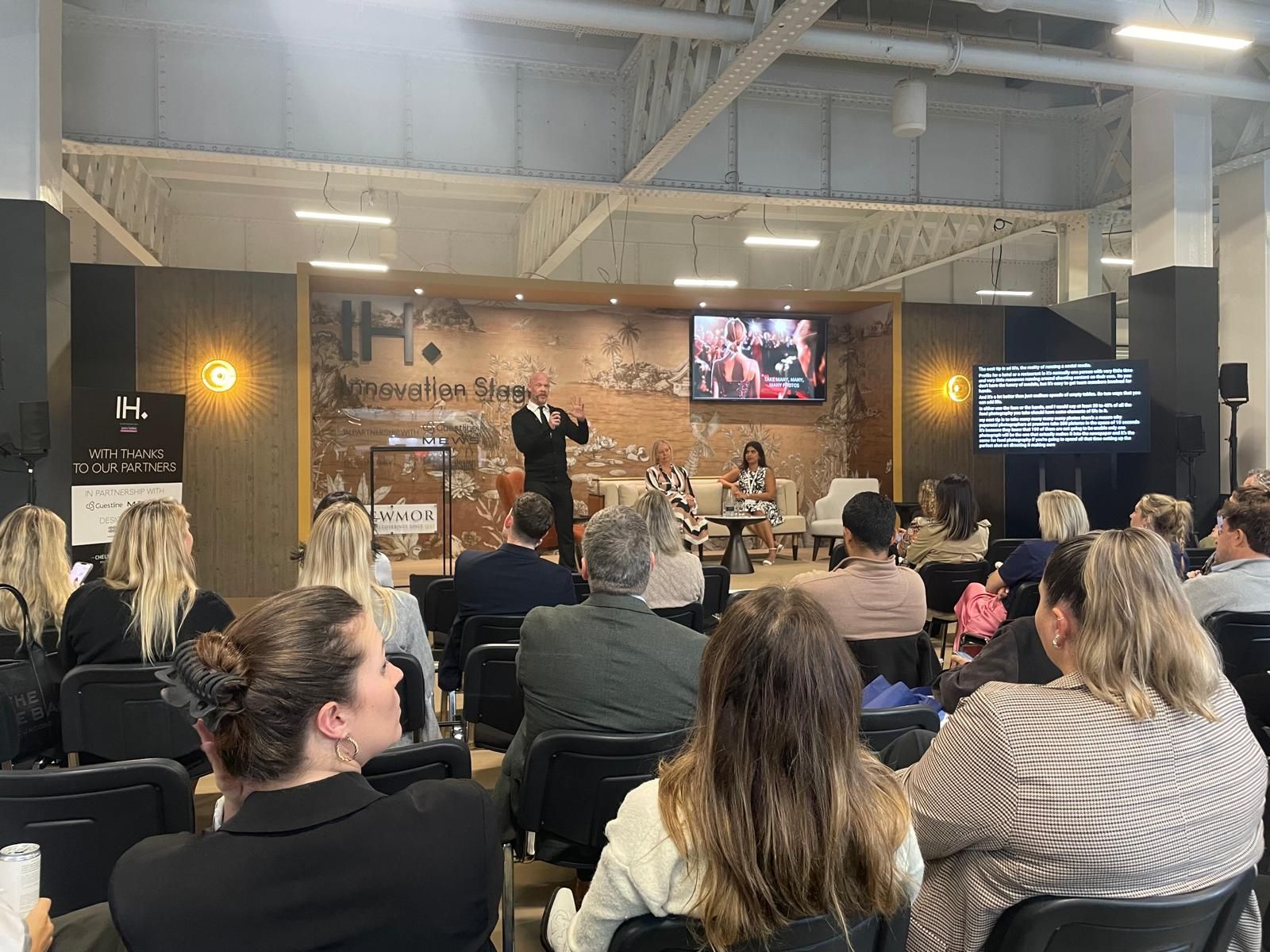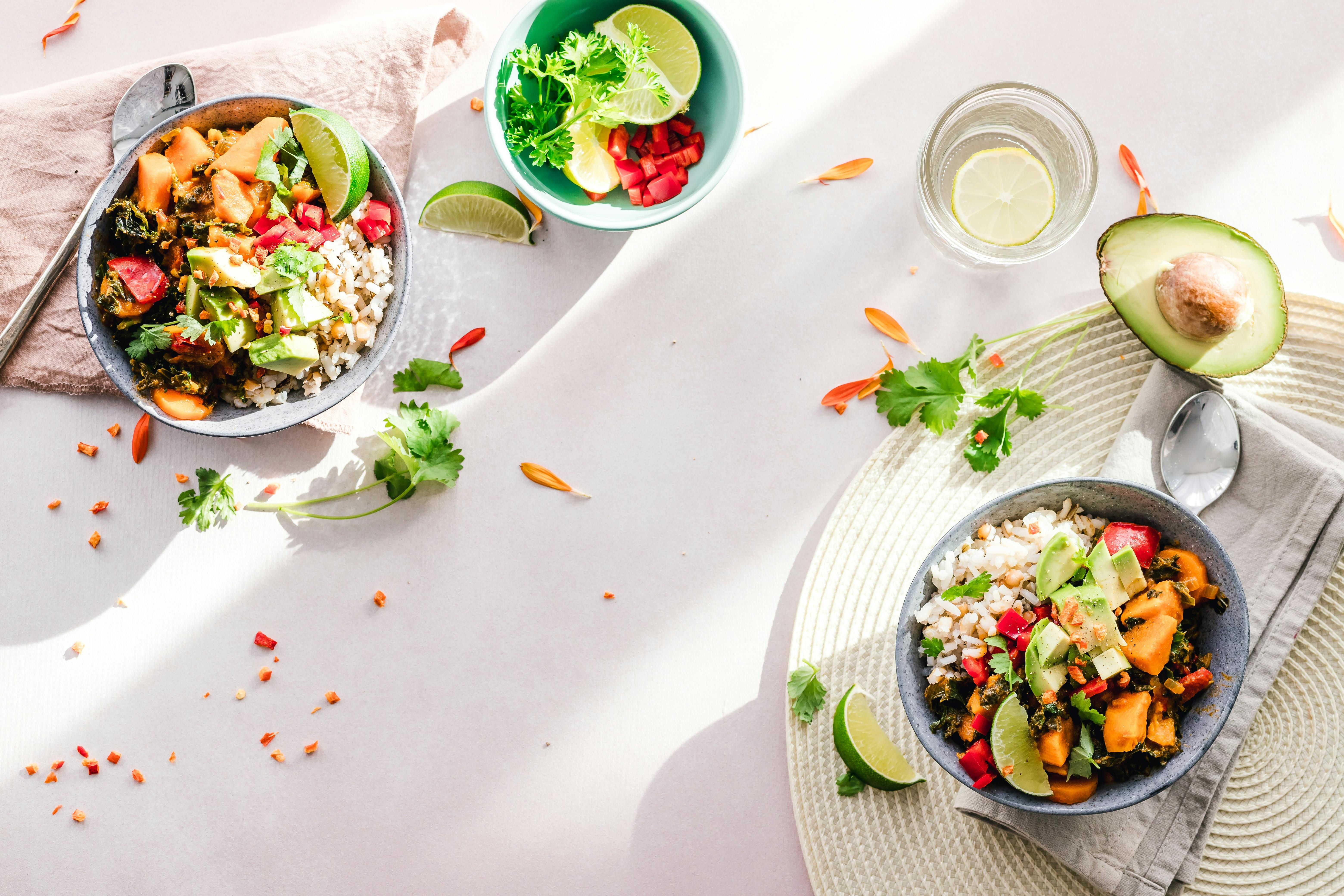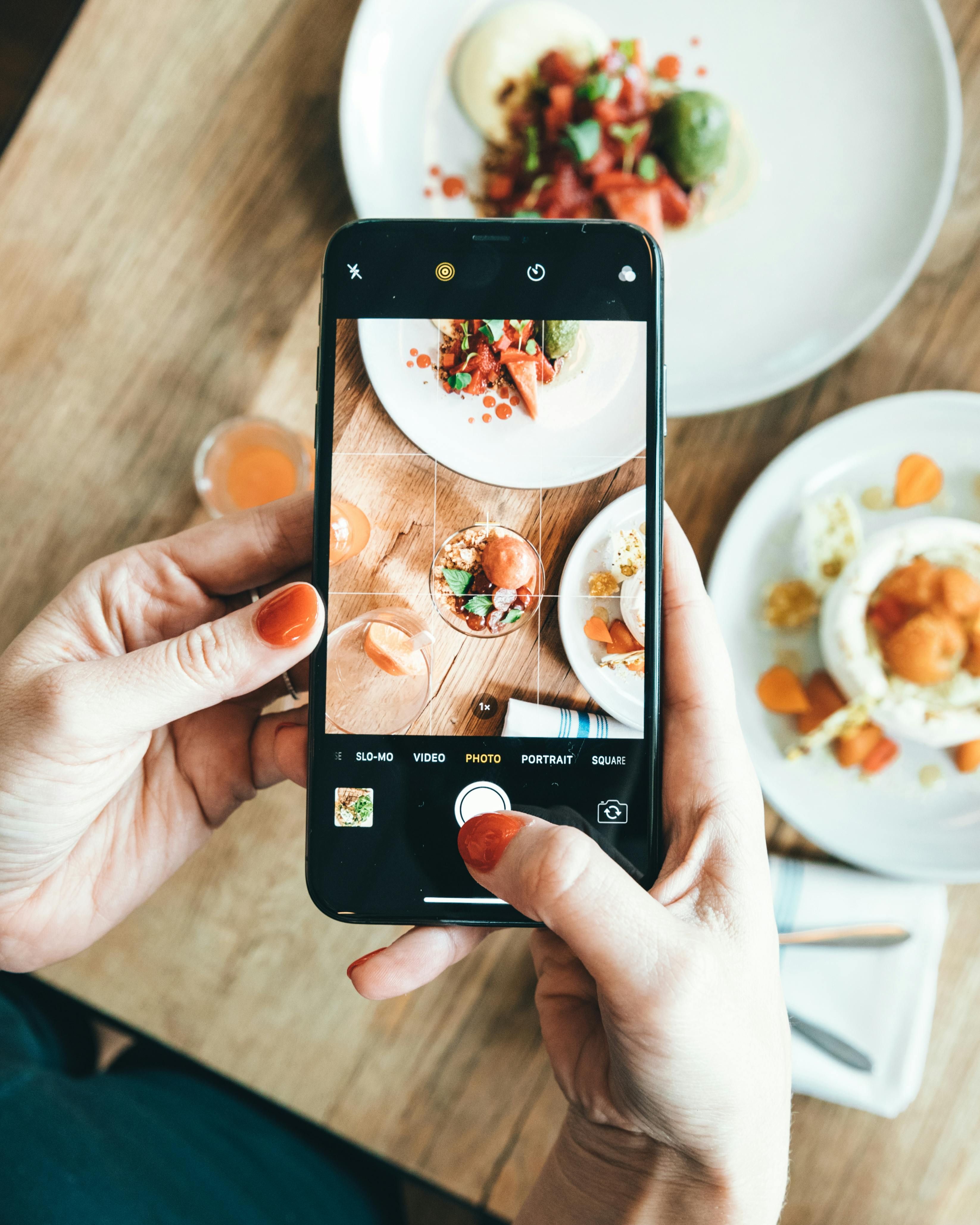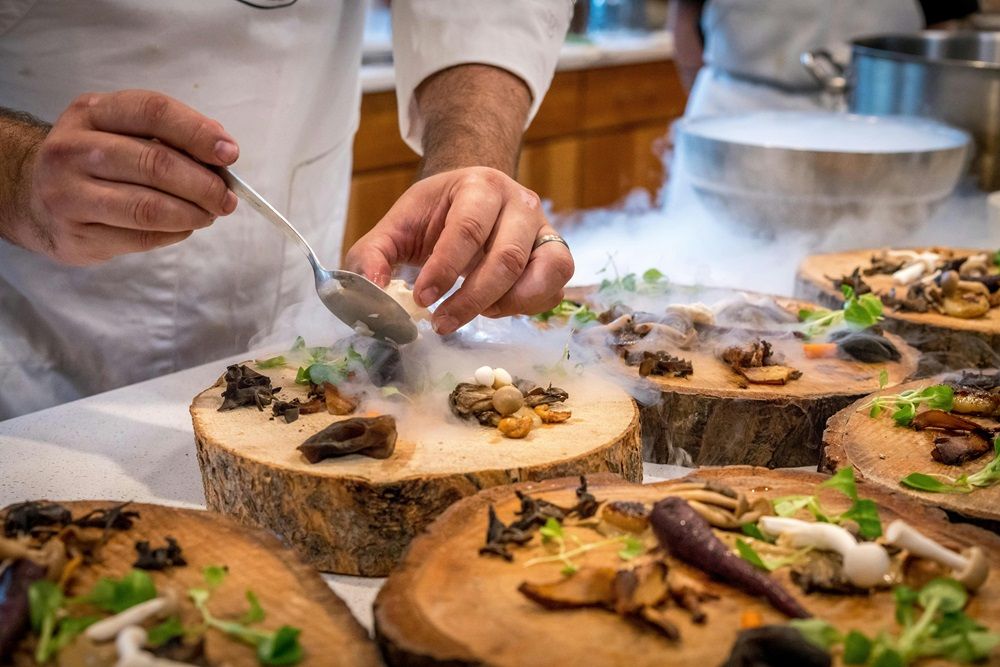Making your menu shine with social media
A standout session which brought the Independent Hotel Show to a close this year was a social media presentation by Andy Whiteside, Director of Digital Communications at 80 Days, which revealed how hotels, bars and restaurants can elevate their food & drink photography with a few simple tips.
Here’s a breakdown of his advice.

Tip 1: Shoot Vertically
“You’d be surprised how many clients ask for a social media overhaul and are still not shooting vertically,” says Whiteside. Social media today is a vertical, portrait-oriented, full-screen, scrollable experience. This mobile-first approach requires photography that fits the format, so always ensure your photos are in portrait orientation.
Tip 2: Art Direction
It’s all about getting the little details right before you take a shot. There are two art direction styles:
Making the Messy Look Meticulous: Arrange plates, napkins, and cutlery carefully to appear effortlessly casual. This “organised chaos” approach creates a relaxed, inviting aesthetic.
Making the Meticulous Look Casual: Sometimes, a carefully made bed or a neatly arranged table benefits from a slight “imperfection” to appear lived-in, like rumpling a duvet or leaving a spoon askew. It’s not about perfection but conveying a sense of life and authenticity.
Tip 3: Embrace Colour
It’s more than simply photographing colourful dishes. Think about how the colours in your food relate to the surrounding scene. For example, a bright dish against a neutral background can highlight vibrancy, while a monochromatic scheme can create a cohesive, elegant feel. Consider the entire colour palette, ensuring your food complements the environment.
Tip 4: Lighting is Key
Lighting is one of the most crucial elements in food photography. A common mistake is to dash out on a sunny day and take photos in direct sunlight, resulting in harsh, overexposed images. Instead, harness natural light in softer ways:
- Cloudy Days: Overcast skies act as natural diffusers, providing even light.
- Indoor Natural Light: Shooting near a window on a cloudy day can offer great results.
- DIY Light Diffuser: White foam boards (from an art shop) can be used at a 45-degree angle to bounce light, creating a mini food studio setup with soft, even lighting.

Tip 5: Composition
Composition is essential for visually engaging images. Whiteside recommends trying these techniques:
- Enable Gridlines: Activating gridlines on your camera helps with centring the focal point and aligning elements.
- Rule of Thirds: By positioning your main subject at one of the points where grid lines converge, you can create a balanced and visually appealing shot. Research has found that social media users naturally look to the top left of an image first.
- Utilise Negative Space: Leaving empty space around the subject adds a sense of scale and enhances the subject.
- Central Focal Point: Perfect for symmetrical scenes or images when natural lines are already drawing the eye to the centre.
- Shift Focus: Placing the hero of the picture at the top or bottom of the frame can create interest, but with these shots it’s advisable to have a strong or striking background.
- Fill the Frame: Move in close, allowing the food to occupy the entire frame, making it the clear star of the show.

Tip 6: Bokeh Effect
Bokeh—the blurring of the background—enhances the focus on the main subject. Most smartphones can create this effect in portrait mode, making it easy to highlight the food while softening a cluttered or busy background, like a kitchen.
Tip 7: Add Life
Managing social media for a hotel or restaurant often involves limited resources, but adding life to your shots can make them more engaging. Instead of endless photos of empty tables, involve team members from your hotel, bar or restaurant (if they’re willing!)
Capture hands reaching for dishes or even the face of a chef proudly presenting their creation. Ideally, says Whiteside, approximately 30-40% of food photography on your social media feed should include an element of human presence, creating warmth and relatability.

Tip 8: Take Multiple Shots
There’s a reason why photographers at high-profile events take hundreds of shots—they know most won’t be perfect. The same applies to food photography. After setting up the ideal shot with precise lighting and composition, take at least 30 to 40 pictures from different angles to increase your chances of getting the perfect image.
Tip 9: Post-Production
Keep post-production edits subtle. While it can be tempting to adjust colours and contrasts extensively, over-editing can make photos look artificial. Whiteside recommends focusing on small tweaks: a slight increase in brightness and exposure can bring out details without distorting the colours. These simple adjustments can make a noticeable improvement without compromising authenticity.
Stay up to date with all the latest industry news, trends and interviews by subscribing to the Independent Hotel Show newsletter.
Find out more about 80 Days and the agency’s bespoke social media advice and services for hotels by visiting eighty-days.com.
)
)
)
)
)
)
)
)
)
)
)
)
)
)
)
)
)
)
)
)
)
)
)
)
)
)
)
)
)
)
)
)
)
)
)
)
)
)
)
)
)
)
)
)
)
)
)
)
)
)
)
)
)